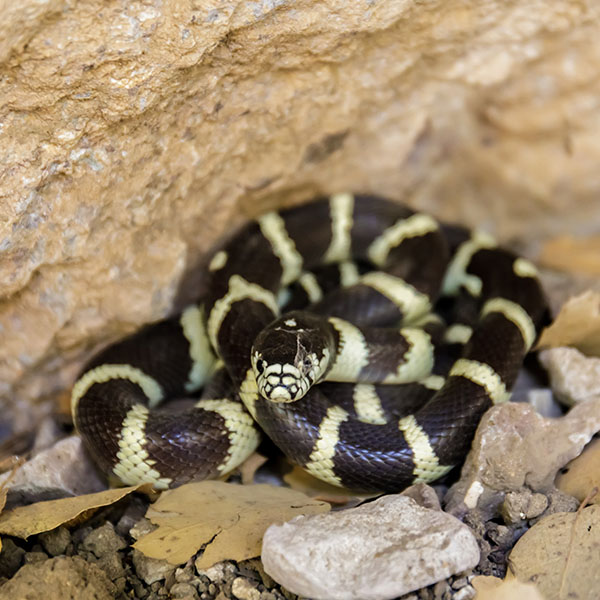California Kingsnake
Lampropeltis getula californiae

Animal Ambassadors
California kingsnakes are found across much of the western United States. They are highly adaptable when it comes to habitat and are found in woodlands, coniferous forests, grasslands, cultivated fields, tropical scrubs, deserts, and riparian areas. These snakes are not venomous and rely instead on constriction to kill their prey. California kingsnakes are opportunistic feeders, but they primarily eat other snakes, even venomous rattlesnakes! They are not completely immune to rattlesnake venom, but they do have some natural resistance to protect them. California kingsnakes have one of the strongest squeeze strengths proportionate to their size, with twice the strength of a comparably-sized python. Some researchers believe that kingsnakes require this extra power because they hunt snakes, which require less oxygen to survive constriction than mammals do. Kingsnakes typically hunt during the day but have been known to hunt at night to avoid hot summertime temperatures. During the winter, they are able to survive the cold by entering into brumation, which is a hibernation-like state of reduced metabolic activity.
Snakes, lizards, small mammals, amphibians, birds, eggs
Oregon, California, Nevada, Utah, Arizona, and northern Mexico
5-9 years / 15-25 years
Highly varied
4-5 feet
